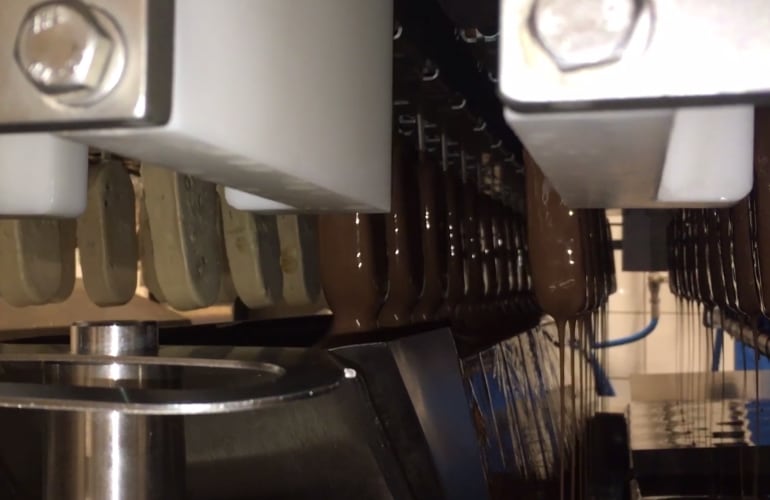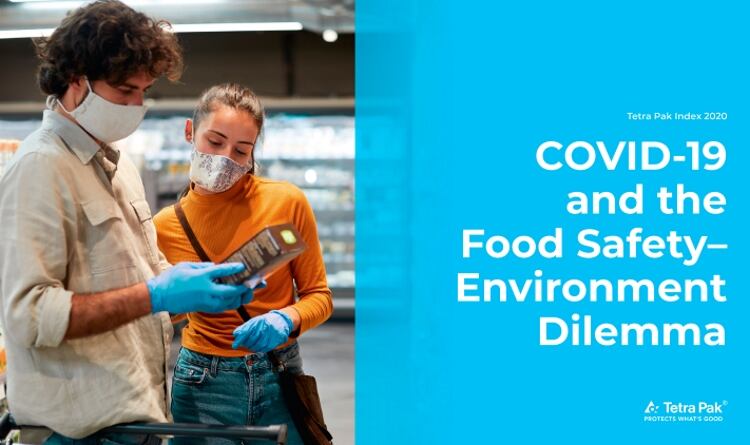Whether its a towering triple scoop of gelato or ice cream encased in a layer of chocolate and served on a stick, ice cream is synonymous with the taste of summer.
This year, however, wasn’t normal, and neither was it a normal summer. What should have been the peak ice cream season for the Northern Hemisphere, saw instead most ice-cream parlors, shops and restaurants shuttered for months. Our lives were socially distanced and in lockdown.
Despite a global pandemic, even now into autumn and winter, ice cream is still a global favorite – but the ice-cream industry has had to be nimble to make sure businesses keeps on churning.
Helping many ice-cream makers was Tetra Pak, a food processing and packaging solutions company. Close up, from these challenging circumstances, the company has seen new opportunities for growth arise, which will help ice-cream producers adapt now and thrive in the future.
Home comforts
“Roughly half of the world's ice cream is produced with the help of Tetra Pak equipment,” Peter Lindstrom, managing director at Tetra Pak Ice Cream Solutions, said.

Tetra Pak is the leading provider of equipment to make ice cream – from the mix-plant, freezers, ingredient dosers, extrusion and all the way to the end-of-line solutions - integrating processing, automation and technical services.
According to Lindstrom, although the world almost came to a halt during the initial lockdowns, indulgence did not stop. Instead it shifted as consumers sought reassurance from the familiar and sought out the delicious as comfort in their homes. The industry saw a move away from single serve impulse buys, which were replaced by a trend towards multipacks of premium ice creams instead.
“The larger brands in the market have definitely seen sharply growing demand for ice cream, but obviously not for single serve portions or food-services, but take-home bulk products and multipacks,” Lindstrom explained.
“One of our customers, for example, saw sales of its premium product in China grow by 40% during the lockdown, much of it driven by e-commerce providers that do instant deliveries, enabling consumers to order a box of ice creams on a stick and have it in their home freezer within an hour.”
It’s a trend not limited to China.
“Producers in the United States and elsewhere are experiencing significant growth as well.”
For many, this growth opportunity was rather unexpected during this otherwise challenging period. To meet the need, Lindstrom said, producers had to have access to the right distribution channels and have the equipment that made it easy to quickly convert the processing and packaging from single serve to a multipack production – with an emphasis on premium products.
Distribution channels, however, were just as important.
“What we’re seeing is that many smaller brands – that don’t already have access to space in supermarket refrigerators – struggle because they relied on the impulse market and food services, such as selling through small kiosks and to restaurants etc.,” Lindstrom said.
A taste for premium novelties
In the longer term, however, there is potential for all ice-cream producers to take advantage of the global love for ice cream. Lindstrom said he anticipates overall consumption will continue to grow, with more planned purchases and less impulse purchases. Those investing in innovative premium products now are likely to see the biggest upturn in the future.
“Most of the growth isn’t in the lower end of the market, it’s for premium products… consumers really indulged and are choosing the high-end options.”
Consumers have discovered a taste for premium and novel products during the lockdown, with fancier ice creams – especially for products with “inclusions” in the ice cream like fruits and salted caramel proving to be especially popular, Lindstrom explained.
Another trend that’s here to stay is sustainability. Despite COVID-19, consumers still expect companies to stick with their environmental goals; since they want sustainable products.
Lindstrom said the demand for sustainability is not at odds with the trend for premiumization, but rather supports it: “People who are prepared to pay for premium are also happy to pay a little bit more for products that they know to be sustainably produced.”
Another big trend boosting the industry, Lindstrom said, is the growing popularity of dairy-free ice cream. Consumers have many different reasons to go dairy free; it could be health reasons, food allergies, or concerns about animal welfare and sustainability. But while consumers are increasingly reaching for plant-based products, they ultimately still expect a product that ticks all the ice cream boxes: rich, creamy and rich flavor – factors that can be difficult for manufacturers to achieve when using dairy alternatives.
Lindstrom said, “Consumers still want the product to be indulgent - the texture has to be the same and it has to almost match a dairy based product.”
He added Tetra Pak helps its customers to develop and fine-tune even the most unusual and complicated recipes to create ice creams with all the added extras – from almond and fruit pieces to chocolate – whether they are dairy- or plant-based.
Travel-free product trials
Tetra Pak has 10 Product Development Centres (PDCs) globally, which act as a one-stop shop for new product and category trials. They are equipped to address the technical challenges and opportunities of developing and reformulating ice cream products in a cost- and time-effective, highly flexible way without the need to close down a production line to experiment, Lindstrom said.
That flexibility was tested in the wake of COVID-19 travel restrictions. From the specialized ice cream PDC centre in Aarhus, Denmark, Lindstrom and his team are helping customers innovate with live-streamed product trials for customers that are far away and in lockdown.
Whether virtual or face-to-face, any product trial starts with an idea.
“Ice cream invention happens either at customers or here at Tetra Pak,” Lindstrom said.
Most of the time, it’s the customer who comes to Tetra Pak with an ideal however, Tetra Pak also has an in-house consumables group that discovers exotic raw materials and conceptualizes the next generation of ice creams.
From there the trials and tribulations of product development get under way.
“We need to test: is it sustainable? Is it nice and creamy? What happens to it after it has been frozen to minus 25 degrees?”
When it comes to the look and feel of a product, customers can assess that in real time as they follow the trial live from afar; they can even see what’s happening inside certain machines. To allow for tasting, however, Tetra Pak arranges for samples from the trial itself to be sent to the customer.
From process to packaging
The innovation doesn’t stop at flavor and textures. Lindstrom said they consider every aspect of new product development to help customers get the highest quality version of the new products on supermarkets shelves, as quickly as possible.

To keep up with changes in demand, Tetra Pak is now helping many customers to upgrade or expand their lines with Tetra Pak’s equipment, which makes it possible to quickly change between products.
Even during the pandemic, customers continued to invest in “premium equipment to cater for premium products.” Tetra Pak said it already sees many customers investing in upgrades and expansions to be ready for 2021, COVID-19 or not.
The at-home consumption trend has also led to an increased demand for creative packaging options.
“We are working with partners to continually develop the offering for multipacks and creating even more exciting solutions, where you can combine multiple products into one pack.”
He added that consumers also “buy with their eyes.”
The future of frozen is flexible and forward thinking
Ice cream production can be anything but simple, with ever-evolving flavor and format trends, shifting consumer behavior and a growing expectation for a company to be sustainable at every touchpoint.
Lindstrom said Tetra Pak is working to provide ice cream manufacturers not only with hassle-free flexible solutions, but also increased efficiency, quality, sustainability and consumer-centered innovation.
As someone who plays a role in the production of half of the world’s ice cream, Lindstrom is non-committal on his own favorite flavor.
“It's like choosing between your children,” he said.
“It changes every day… being in the business I’m in, I like all ice creams.”




